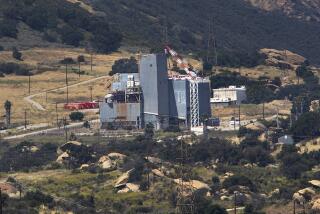Brea : Unocal Pledges $500,000 Toward Plant Safety
- Share via
Unocal officials have pledged more than $500,000 in safety measures designed to prevent accidents at the firm’s chemical plant on Imperial Highway. The action was taken during a public discussion of a $250,000 study of potential hazards at the facility.
Ed Johnson, Unocal vice president of chemical manufacturing, told about 70 residents at a City Hall meeting that only a condensed version of the study would be available to the public. The original reports are released only to government and company officials because the details “would be of benefit to our competitors,” he said.
In response to a question about sensitive individuals (people with asthma, heart conditions and other ailments), Dr. Gary Spivey, Unocal’s director of environmental health, said that such people would not suffer any effects from the plant under normal conditions. However, under what he called a “highly unlikely” worst-case scenario, which would include a release of lethal ammonium or chlorine gas, those people would suffer more than others, he added.
Other residents asked whether headache and sinus problems were related to plant operations. Spivey said the chemicals produced in Brea, including ammonia, nitric acid, ammonia nitrate and urea, would not cause those problems.
The study was prompted by complaints from nearby residents after a release of ammonia in September, 1984. (Plant manager Joe Blanchard said that measures have been taken to prevent a similar release.) The study, conducted by Bechtel Engineering Inc., calculated the probability of numerous accident scenarios.
Six of those scenarios were studied and safety measures were recommended, Johnson said. The most probable accident would be a spill during loading of ammonia, which could happen once every 65 years, according to the study. Johnson said flexible hoses used to load the substance have been replaced and additional operators and training are now required.
Other possible incidents studied included transportation accidents within 10 miles of the plant, calculated at once every 400 years for trucks and once every 5,500 years for trains; a failure of a rail tank car in the plant, once every 6,500 years, and failure of a “bottom seam” in the ammonia storage tank, once every 11,000 years.
Although worst-case scenarios could result in serious health effects, ranging from eye irritation to bronchitis and even death, Johnson said the likelihood of such a tragedy is remote. “However,” he added, “the plant is not without risk. There is no such thing as a risk-free society.”
More to Read
Inside the business of entertainment
The Wide Shot brings you news, analysis and insights on everything from streaming wars to production — and what it all means for the future.
You may occasionally receive promotional content from the Los Angeles Times.










